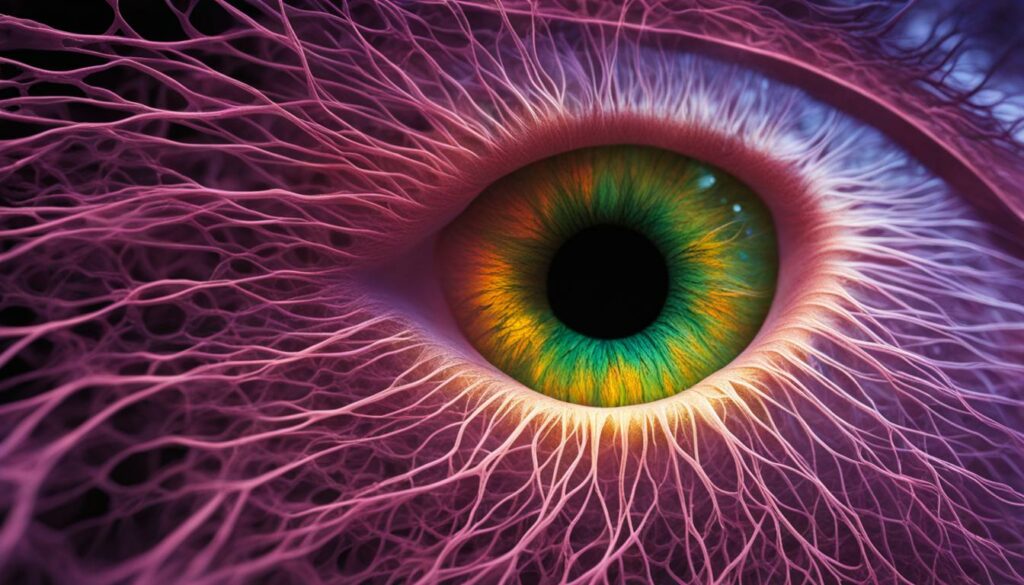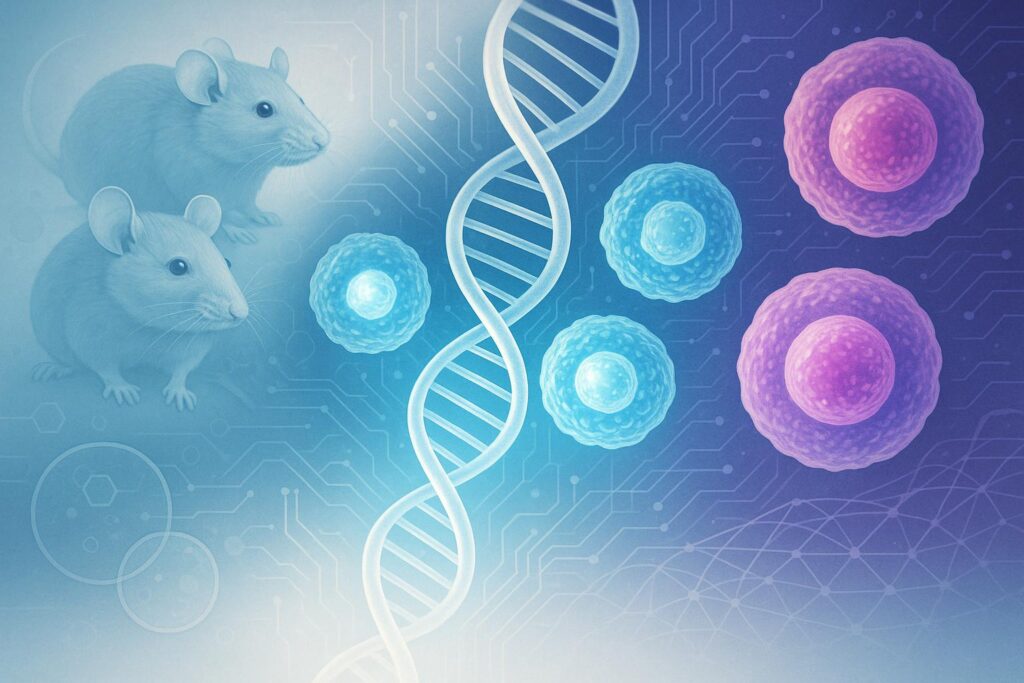Corneal tissue engineering using stem cells is revolutionizing the field of vision restoration and offering hope to individuals suffering from corneal blindness. Stem cells, with their ability to self-renew and differentiate, hold great promise for regenerating damaged corneal tissue. Various biological scaffolds, such as the amniotic membrane, fibrin, and hydrogels, have been explored as potential platforms for stem cell transplantation. This article provides a comprehensive overview of the history, current advancements, and future prospects of corneal tissue engineering with stem cells.
Key Takeaways:
- Corneal tissue engineering with stem cells offers hope for vision restoration in individuals with corneal blindness.
- Stem cells hold great promise for regenerating damaged corneal tissue due to their ability to self-renew and differentiate.
- Biological scaffolds, including the amniotic membrane, fibrin, and hydrogels, provide a supportive platform for stem cell transplantation.
- The history, current advancements, and future prospects of corneal tissue engineering with stem cells are discussed in this article.
- Stay tuned to learn more about the latest developments in corneal tissue engineering and the potential for improving the lives of individuals with corneal disorders.
As we delve into the exciting world of corneal tissue engineering and stem cell innovations, we uncover a new realm of possibilities for vision restoration in those affected by corneal blindness. With advancements in scientific research and technology, we are now able to explore the potential of stem cells in regenerating damaged corneal tissue, offering hope for improved vision and quality of life.
In this article, we will provide you with a comprehensive overview of corneal tissue engineering with stem cells, discussing the history, current advancements, and future prospects of this groundbreaking field. From exploring different biological scaffolds to understanding the challenges and benefits of corneal transplantation, we will delve into the intricacies of corneal tissue engineering and its potential impact on individuals with corneal disorders.
Join us on this journey as we unravel the mysteries of corneal tissue engineering and stem cell innovations, paving the way for a brighter future for those suffering from corneal blindness.
Corneal Epithelial Stem Cells and Repair
Corneal epithelial defects and severe corneal epithelial injury can result in significant complications. That’s where corneal epithelial stem cells and tissue engineering come into play. These remarkable stem cells hold the potential to regenerate damaged corneal tissue, offering hope to those in need.
When it comes to corneal repair, biological scaffolds play a crucial role. These scaffolds, such as the amniotic membrane, fibrin, and hydrogels, provide the necessary signals for stem cell proliferation and differentiation. They create an optimal environment for corneal epithelial stem cells to flourish and heal.
Studies have been conducted to evaluate the efficacy of these biological scaffolds in corneal repair. They have shed light on the benefits and limitations of utilizing biological scaffolds for stem cell-based therapy in restoring corneal health.
Benefits of Corneal Epithelial Stem Cells and Biological Scaffolds
Incorporating corneal epithelial stem cells and biological scaffolds in corneal repair offers numerous advantages:
- Promotes efficient stem cell proliferation and differentiation
- Aids in the regeneration of damaged corneal tissue
- Enhances overall healing process
- Minimizes scar formation
- Restores corneal transparency and function
These benefits, along with ongoing advancements in stem cell research and tissue engineering, pave the way for innovative approaches in treating corneal epithelial injuries.
“Corneal epithelial stem cells coupled with biological scaffolds provide a compelling framework for corneal repair and regeneration.” – Dr. Samantha Johnson, Ophthalmologist
Limitations and Future Directions
While corneal epithelial stem cells and biological scaffolds show great promise, there are still limitations to overcome:
- Optimizing the efficiency of stem cell proliferation and differentiation
- Ensuring long-term survival and integration of transplanted stem cells
- Addressing potential immune responses
- Developing more sophisticated and tailored biological scaffolds
Researchers are actively working on these challenges to further enhance the efficacy and safety of corneal repair using stem cells and biological scaffolds. With continued advancements in the field, corneal epithelial stem cells may revolutionize the treatment of corneal injuries and provide a ray of hope for those in need of vision restoration.
| Biological Scaffold | Advantages | Limitations |
|---|---|---|
| Amniotic Membrane | Promotes stem cell adhesion and migration Reduces scar formation | Requires careful tissue procurement Availability can be limited |
| Fibrin | Provides a natural and biocompatible environment for stem cell growth Allows controlled release of growth factors | Potential risk of infection Short degradation time |
| Hydrogels | Provides structural support for stem cell growth and differentiation Can be tailored for specific applications | Regulating mechanical properties Ensuring long-term stability |
Stem Cell Therapy for Corneal Disorders
Stem cell therapy has emerged as a promising treatment option for a wide range of corneal disorders. The regenerative properties of mesenchymal stem cells have shown significant potential in promoting the regeneration of corneal tissue, offering hope to patients suffering from corneal diseases. However, the success of stem cell therapy relies not only on the cells themselves but also on the effective delivery and support provided by tissue engineering scaffolds.
These tissue engineering scaffolds serve as a framework for the growth and differentiation of stem cells within the cornea, enhancing the regeneration process. The scaffolds create a microenvironment that mimics the natural extracellular matrix, providing cues for the stem cells to proliferate and differentiate into corneal cells. Through this integration of stem cell therapy and tissue engineering, researchers have made significant strides in addressing corneal disorders and restoring vision.
The use of mesenchymal stem cells in corneal regeneration has shown promising results in preclinical and clinical studies. These multipotent cells possess the ability to differentiate into various cell types found within the cornea, including corneal epithelial cells, stromal cells, and endothelial cells. The transplantation of these cells, combined with tissue engineering scaffolds, has demonstrated the potential to repair and regenerate damaged corneal tissue, leading to improved visual outcomes.
“The integration of stem cell therapy and tissue engineering has allowed us to harness the regenerative potential of stem cells in treating corneal disorders. By utilizing tissue engineering scaffolds, we can create an environment conducive to corneal regeneration, paving the way for effective treatment options and improved patient outcomes.”
In recent years, various tissue engineering scaffolds have been explored for their suitability in corneal regeneration. These scaffolds provide structural support and a biocompatible environment for the growth and maturation of stem cells. By mimicking the native tissue architecture, these scaffolds promote cellular interactions and guide the development of functional corneal tissue.
One example of a tissue engineering scaffold is the use of a collagen-based matrix. Collagen, a major component of the cornea, provides a natural substrate for stem cell attachment and growth. The scaffold can be structured to mimic the organization of collagen fibrils within the cornea, promoting the regeneration of aligned corneal tissue. Other synthetic and natural materials, such as hydrogels and silk-elastin-like proteins, have also shown promise in supporting corneal regeneration.
Furthermore, the application of bioprinting technology in corneal tissue engineering has opened new possibilities for creating complex corneal structures. 3D bioprinting allows precise deposition of both stem cells and biomaterials layer by layer, enabling the fabrication of corneal tissue with precise spatial control. This technology holds the potential to overcome the limitations of traditional transplantation methods and provide custom-tailored solutions for patients.
Mesenchymal Stem Cell Benefits in Corneal Regeneration:
- Promotes regeneration of corneal tissue
- Differentiates into various corneal cell types
- Improves visual outcomes
- Enhances tissue engineering scaffold integration
Tissue Engineering Scaffold Advantages:
- Provides structural support for stem cell growth
- Mimics native tissue architecture
- Promotes cellular interactions
- Guides the development of functional corneal tissue
| Tissue Engineering Scaffold | Advantages |
|---|---|
| Collagen-based matrix | Provides a natural substrate for stem cell attachment and growth |
| Hydrogels | Supports the growth and differentiation of stem cells |
| Silk-elastin-like proteins | Biocompatible and structurally similar to native corneal tissue |
Challenges and Benefits of Corneal Transplantation
Corneal transplantation, also known as corneal graft, is a well-established treatment option for individuals with corneal blindness. However, this procedure is not without its challenges. From the availability of donor corneas to potential immune reactions and the risk of corneal allograft rejection, several obstacles must be overcome for successful transplantation.
The first challenge lies in the availability of donor corneas. Due to the limited supply, finding a suitable corneal graft can be a daunting task. The demand for corneal tissue often exceeds the supply, resulting in long waiting lists for patients in need.
Furthermore, immune reactions pose a significant concern in corneal transplantation. When a foreign cornea is transplanted, the recipient’s immune system may recognize the graft as “non-self” and mount an immune response. This immune response can manifest as inflammation, leading to graft failure.
Additionally, there is a risk of corneal allograft rejection. The recipient’s immune system may target the transplanted cornea, leading to graft failure and the need for retransplantation. Corneal allograft rejection can occur through both cellular and humoral immune responses, further complicating the transplantation process.
Despite these challenges, corneal transplantation offers numerous benefits. The primary benefit is the restoration of vision for individuals with corneal blindness. By replacing a damaged or diseased cornea with a healthy donor cornea, vision can be significantly improved, allowing individuals to regain their independence and quality of life.
Moreover, corneal transplantation can provide relief from pain and discomfort associated with corneal diseases. Conditions such as keratoconus, corneal scars, and corneal dystrophies can cause severe pain, blurry vision, and sensitivity to light. Corneal transplantation addresses these symptoms, alleviating the patient’s discomfort and improving overall ocular health.
Therefore, while corneal transplantation presents its fair share of challenges, the benefits it offers cannot be overlooked. With ongoing research and advancements, efforts are being made to overcome these challenges and improve the success rate of corneal transplantation. By addressing the limitations and optimizing the transplantation process, we can continue to enhance the outcomes for individuals in need of corneal grafts.
Corneal Structure and Function
Understanding the intricate structure and essential functions of the cornea is crucial in the field of corneal tissue engineering. The cornea, the transparent outermost layer of the eye, plays a vital role in focusing light onto the retina and maintaining clear vision. It consists of different layers, each contributing to its overall function.
The corneal structure can be divided into three main layers: the epithelium, the stroma, and the endothelium. The corneal stroma, located between the epithelium and the endothelium, constitutes about 90% of the corneal thickness and provides its shape and strength. It is composed of collagen fibers arranged in a highly organized pattern, giving the cornea its transparency. The corneal endothelium, a single layer of cells on the inner surface of the cornea, helps maintain corneal clarity by regulating the levels of fluid within the cornea.
Ion transport is a vital process that contributes to the unique properties of the cornea. The movement of ions, such as sodium, potassium, and bicarbonate, across the corneal layers helps maintain the proper balance of fluid and electrolytes, ensuring the cornea remains transparent. This ion transport is mediated by various ion channels and pumps present in the corneal endothelium and epithelium.
Corneal biomechanics, the study of the mechanical properties of the cornea, also plays a significant role in its function. The cornea acts as a transparent barrier that withstands external forces and maintains its shape. Its biomechanical properties, including elasticity and rigidity, allow it to maintain proper curvature and focus light onto the retina. Alterations in corneal biomechanics can affect vision and lead to conditions such as keratoconus.
In summary, a thorough understanding of the corneal structure, including the corneal stroma, corneal endothelium, ion transport, and corneal biomechanics, is crucial for developing advanced techniques in corneal tissue engineering. By unraveling the complexities of the cornea, researchers can devise innovative strategies to restore and preserve corneal function, ultimately improving the quality of life for individuals with corneal disorders.
Biomaterials for Corneal Tissue Engineering
The development of biomaterials plays a critical role in advancing the field of corneal tissue engineering. These materials provide a supportive matrix for the growth and differentiation of stem cells, facilitating the regeneration of corneal tissue. In this section, we will explore the latest advancements in biomaterials for corneal tissue engineering, including hydrogels, silk-elastin-like proteins, laminin, and collagen.
Hydrogels
Hydrogels are a class of biomaterials that closely resemble the natural extracellular matrix (ECM) of the cornea. These three-dimensional networks of polymers have high water content, allowing for excellent biocompatibility and cell adhesion. Hydrogels provide a suitable environment for stem cells to proliferate, differentiate, and organize into corneal tissue structures. Their tunable properties, such as mechanical stiffness and degradation rate, make hydrogels a versatile choice for corneal tissue engineering.
| Advantages of Hydrogels in Corneal Tissue Engineering | Challenges in Using Hydrogels for Corneal Tissue Engineering |
|---|---|
|
|
Silk-Elastin-Like Proteins
Silk-elastin-like proteins (SELPs) are biomaterials derived from silk and elastin, two proteins with exceptional mechanical properties. The combination of these proteins produces a material with high elasticity, strength, and biocompatibility. SELPs can act as a scaffold for stem cell growth and differentiation, promoting corneal tissue regeneration. The ability to tailor SELPs’ properties, such as degradation rate and mechanical strength, makes them a promising candidate for corneal tissue engineering.
Laminin
Laminin is a glycoprotein present in the basement membrane of the cornea that plays a crucial role in cell adhesion, migration, and differentiation. By incorporating laminin into biomaterials, researchers aim to enhance cell adhesion and promote the formation of functional corneal tissue. Laminin-based biomaterials have shown promising results in supporting the growth and differentiation of corneal epithelial cells and endothelial cells.
Collagen
Collagen is the most abundant protein in the cornea and provides structural support to maintain corneal transparency and function. Collagen-based biomaterials have been extensively studied for corneal tissue engineering due to their excellent biocompatibility and bioactivity. These biomaterials serve as a matrix for cell attachment, proliferation, and organization into corneal tissue structures. The use of collagen-based scaffolds has shown promising outcomes in promoting corneal epithelial and stromal regeneration.

In conclusion, the development of biomaterials, such as hydrogels, silk-elastin-like proteins, laminin, and collagen, holds immense potential in advancing corneal tissue engineering. These materials provide a supportive environment for stem cell growth and differentiation, facilitating the regeneration of functional corneal tissue. Continued research and advancements in biomaterials will pave the way for innovative therapies to restore vision and improve the quality of life for individuals with corneal disorders.
3D Bioprinting for Corneal Applications
3D bioprinting is an exciting and innovative technology that holds immense potential in the field of corneal tissue engineering. By combining the power of stem cells and bioinks, researchers can now fabricate 3D corneal structures that closely resemble native tissue. This groundbreaking approach has the potential to revolutionize corneal transplantation and address the global challenge of corneal blindness.
At the forefront of 3D bioprinting is the technique known as laser-assisted bioprinting. This advanced method enables the precise deposition of cells and biomaterials, allowing for the creation of intricate and complex corneal tissue structures. By meticulously controlling the placement of stem cells and bioinks, scientists can generate corneal tissues with enhanced functionality and improved therapeutic outcomes.
3D bioprinting offers unprecedented opportunities to overcome the limitations of traditional tissue engineering methods by precisely arranging stem cells and biomaterials to create complex 3D corneal structures. This breakthrough technology holds great promise for corneal regeneration and transplantation, providing hope for the millions affected by corneal blindness.
Advancements in 3D Bioprinting
The field of 3D bioprinting has witnessed significant advancements in recent years, propelling it closer to clinical applications for corneal disorders. Researchers have successfully developed bioinks that closely mimic the extracellular matrix of the cornea, providing a conducive environment for stem cell growth and differentiation. These bioinks, often composed of natural polymers like collagen and hyaluronic acid, offer optimal mechanical properties and biocompatibility.
In addition to bioinks, the use of stem cells in 3D bioprinting has been a major breakthrough. Stem cells, particularly corneal epithelial stem cells and mesenchymal stem cells, are utilized to regenerate specific corneal tissues and facilitate the integration of the bioprinted construct with the host tissue. The ability of stem cells to self-renew and differentiate into specialized cell types makes them invaluable in the process of corneal tissue engineering.
The Challenges Ahead
While 3D bioprinting holds immense promise, several challenges need to be addressed to translate this technology into viable clinical applications. One such challenge is the scalability of the bioprinting process. As the demand for corneal transplants continues to rise, it is essential to enhance the production efficiency of 3D bioprinted corneal tissues to meet the growing need.
Another challenge lies in promoting the long-term survival and functionality of the bioprinted corneal tissues. Ensuring proper vascularization, innervation, and integration with the surrounding tissues are crucial for successful transplantation outcomes. Ongoing research aims to optimize these parameters and improve the overall performance of 3D bioprinted corneal constructs.
The Future of Corneal Tissue Engineering
The future of corneal tissue engineering looks promising with the continued advancements in 3D bioprinting technology. As researchers refine the techniques and overcome the current challenges, we can envision a future where personalized corneal constructs are readily available for transplantation, offering a more efficient and effective treatment option for corneal disorders.
Through collaborations between scientists, clinicians, and bioengineers, we can accelerate the translation of 3D bioprinting into clinical practice, ultimately benefiting patients suffering from corneal blindness worldwide. The potential for 3D bioprinting to restore vision and improve the quality of life for these individuals is truly remarkable.
| Advantages of 3D Bioprinting for Corneal Applications | Challenges in 3D Bioprinting for Corneal Applications |
|---|---|
| 1. Precise deposition of stem cells and bioinks, enabling the creation of complex corneal tissue structures | 1. Scalability of the bioprinting process to meet the increasing demand for corneal transplants |
| 2. Customization of corneal constructs to match patient-specific requirements | 2. Promoting long-term survival and functionality of the bioprinted corneal tissues |
| 3. Enhanced integration of bioprinted corneal tissues with the host tissue | 3. Optimization of vascularization, innervation, and integration of bioprinted constructs |
Clinical Applications and Future Prospects
Stem cell-based therapies and corneal tissue engineering hold great promise for clinical applications in the field of ophthalmology. Through their regenerative capabilities, stem cells offer new possibilities for addressing corneal disorders and improving patient outcomes.
One of the key clinical applications of corneal tissue engineering is in the field of corneal regeneration. By harnessing the potential of stem cells, researchers are exploring innovative approaches to regenerate damaged corneal tissue. These stem cell-based therapies have the potential to restore vision and improve the quality of life for individuals suffering from corneal blindness.
Corneal transplantation, a well-established treatment option for corneal disorders, also stands to benefit from stem cell-based therapies. Stem cells can be used to enhance the success rates of corneal transplantation by improving graft integration and reducing the risk of rejection. By combining stem cell-based therapies with tissue engineering scaffolds, the limitations of traditional transplantation methods can be overcome.
Current Clinical Applications
In the realm of clinical applications, researchers have made significant progress in utilizing stem cell-based therapies for corneal regeneration. The transplantation of cultured limbal stem cells, which reside in the limbus and play a crucial role in maintaining the cornea’s integrity, has shown promising results in treating limbal stem cell deficiency.
Furthermore, clinical trials focused on using amniotic membrane-derived stem cells in corneal regeneration have demonstrated positive outcomes. These studies have highlighted the potential of these stem cells in promoting corneal epithelialization and reducing inflammation.
“Stem cell-based therapies offer new possibilities for addressing corneal disorders and improving patient outcomes.”
Future Prospects of Stem Cell-Based Therapies
The future of stem cell-based therapies in corneal disorders holds immense potential. Researchers are exploring advanced techniques such as gene editing to enhance the regenerative capabilities of stem cells and improve their integration into the cornea. This could pave the way for even more effective treatments and higher success rates in corneal regeneration and transplantation.
Additionally, advancements in 3D bioprinting technology offer exciting prospects for corneal tissue engineering. By precisely constructing corneal structures using stem cells and biomaterials, researchers aim to develop functional and customizable corneal implants. This could revolutionize the field of corneal transplantation, providing patients with tailored solutions and reducing the reliance on donor corneas.
The integration of stem cell-based therapies, tissue engineering, and innovative technologies is poised to transform the landscape of corneal disorders. As research and development continue, the possibilities for clinical applications in corneal regeneration and transplantation will expand, offering new hope to patients worldwide.

Challenges and Ethical Considerations
The field of corneal tissue engineering and stem cell therapy presents unique challenges and ethical considerations that must be carefully addressed. These considerations include the availability of donor corneas, the need for extensive research and development, and the ethical implications of using stem cells. Let us delve into these challenges and ethical considerations associated with corneal tissue engineering and stem cell-based therapies.
Challenges in Corneal Tissue Engineering
Corneal tissue engineering faces several challenges that hinder its widespread implementation. One of the primary challenges is the limited availability of donor corneas for transplantation. The demand for corneal tissue surpasses the supply, resulting in long waiting lists for patients in need. Additionally, the transportation and preservation of donor corneas present logistical difficulties, particularly in remote areas or underdeveloped regions.
Another challenge lies in the complex nature of the cornea itself. The cornea consists of multiple layers with distinct functions, making it challenging to replicate its intricate structure artificially. Achieving optimal transparency, thickness, and biomechanical properties pose significant hurdles in the development of engineered corneal tissue.
Furthermore, the success and effectiveness of corneal tissue engineering heavily depend on the selection and integration of suitable biomaterials and scaffolds. Identifying biomaterials that mimic the natural cornea and provide a conducive environment for cell growth and differentiation is crucial for successful tissue regeneration.
Ethical Considerations in Stem Cell-Based Therapies
Stem cell-based therapies for corneal disorders raise ethical considerations that demand careful examination. The use of stem cells, particularly embryonic stem cells, raises debates surrounding the protection of human life at its earliest stages. This ethical concern stems from the extraction of embryonic stem cells, which inevitably destroys the embryo.
However, advances in stem cell research have also provided alternative ethical options, such as the use of induced pluripotent stem cells (iPSCs). iPSCs are derived from adult cells, eliminating the need for the destruction of embryos. While this addresses some ethical concerns, challenges related to the safety and long-term viability of iPSCs persist.
Additionally, the commercialization and accessibility of stem cell therapies raise ethical dilemmas. Ensuring fair and equitable access to these treatments while preventing exploitation, price gouging, and misleading marketing practices is of utmost importance.
| Challenges | Ethical Considerations |
|---|---|
| Limited availability of donor corneas | Ethical implications of using embryonic stem cells |
| Complex nature of the cornea | Safety and long-term viability of induced pluripotent stem cells (iPSCs) |
| Selection and integration of suitable biomaterials and scaffolds | Commercialization and accessibility of stem cell therapies |
Addressing these challenges and ethical considerations requires collaboration between researchers, clinicians, policymakers, and bioethicists. Striking a balance between scientific progress, patient welfare, and ethical principles is paramount to ensure the responsible development and application of corneal tissue engineering and stem cell-based therapies.
Conclusion
In conclusion, corneal tissue engineering with stem cells offers a revolutionary approach to restoring vision in individuals suffering from corneal blindness. The integration of stem cells, alongside innovative biomaterials and 3D bioprinting techniques, opens up new possibilities for corneal regeneration and transplantation. Through extensive research and advancements, we are poised to enhance the quality of life for those with corneal disorders.
By harnessing the remarkable regenerative potential of stem cells, corneal tissue engineering holds great promise. Stem cells possess the unique ability to self-renew and differentiate into specialized cell types, making them ideal candidates for repairing damaged corneal tissue. When combined with bioactive scaffolds and precise 3D bioprinting, stem cells can be directed to form complex corneal structures, promoting vision restoration.
While challenges and ethical considerations remain, including the availability of donor corneas and the proper utilization of stem cells, the future of corneal tissue engineering looks promising. Continued research and advancements in this field will enable us to overcome obstacles, improve outcomes, and bring hope to individuals experiencing corneal blindness.
FAQ
What is corneal tissue engineering?
Corneal tissue engineering involves the use of stem cells to regenerate damaged corneal tissue, offering hope to individuals suffering from corneal blindness.
How do corneal epithelial stem cells contribute to tissue repair?
Corneal epithelial stem cells play a crucial role in regenerating damaged corneal tissue by proliferating and differentiating into the necessary cells for repair. Biological scaffolds provide the necessary signals for their growth and differentiation.
What is the potential of stem cell therapy for corneal disorders?
Stem cell therapy, particularly using mesenchymal stem cells, has shown promise in promoting corneal regeneration and treating corneal disorders. Tissue engineering scaffolds aid in delivering and supporting the growth of stem cells in the cornea.
What are the challenges and benefits of corneal transplantation?
Corneal transplantation, while a well-established treatment option for corneal blindness, faces challenges such as the availability of donor corneas and the risk of corneal allograft rejection. However, it offers benefits such as vision restoration and improved quality of life.
What is the structure and function of the cornea?
The cornea is composed of different layers, including the stroma and the endothelium, each with specific roles in maintaining corneal transparency and function. Ion transport and corneal biomechanics also play crucial roles in corneal health.
What biomaterials are used in corneal tissue engineering?
Various biomaterials, such as hydrogels, silk-elastin-like proteins, laminin, and collagen, have been explored for their use in corneal tissue engineering. These materials provide a supportive matrix for the growth and differentiation of stem cells, aiding in the regeneration of corneal tissue.
How does 3D bioprinting contribute to corneal tissue engineering?
3D bioprinting is a cutting-edge technology that allows researchers to fabricate 3D corneal structures using stem cells and bioinks. Laser-assisted bioprinting enables precise deposition of cells and biomaterials, allowing for the creation of complex corneal tissue structures.
What are the clinical applications and future prospects of corneal tissue engineering?
Corneal tissue engineering and stem cell-based therapies hold great promise for the clinical treatment of corneal disorders, offering improved outcomes and overcoming the limitations of traditional treatments. The future prospects involve further research and advancements in these fields.
What are the challenges and ethical considerations in corneal tissue engineering?
Challenges in corneal tissue engineering include the availability of donor corneas, extensive research and development requirements, and ethical concerns surrounding the use of stem cells. Consideration of these factors is crucial in advancing this field responsibly.



